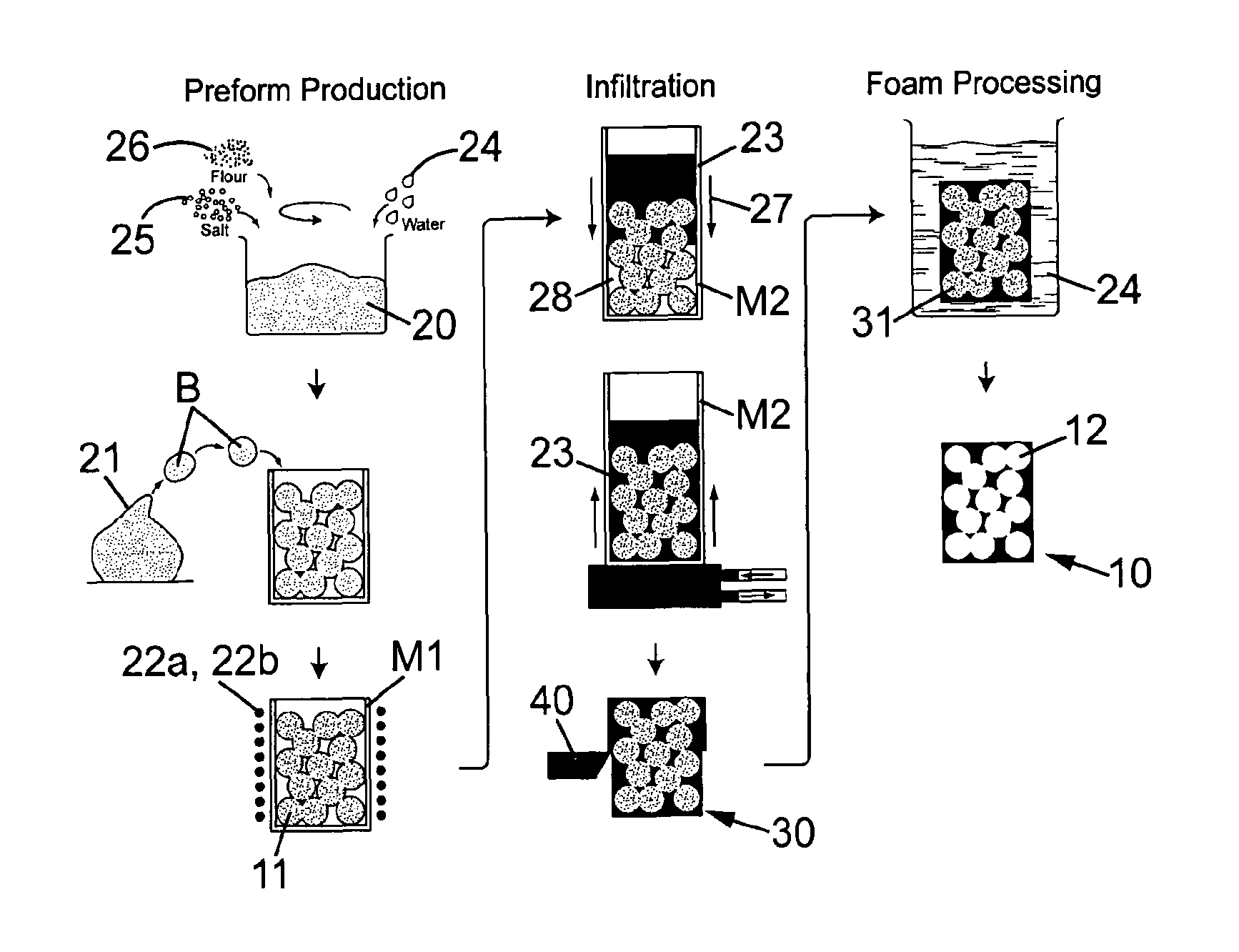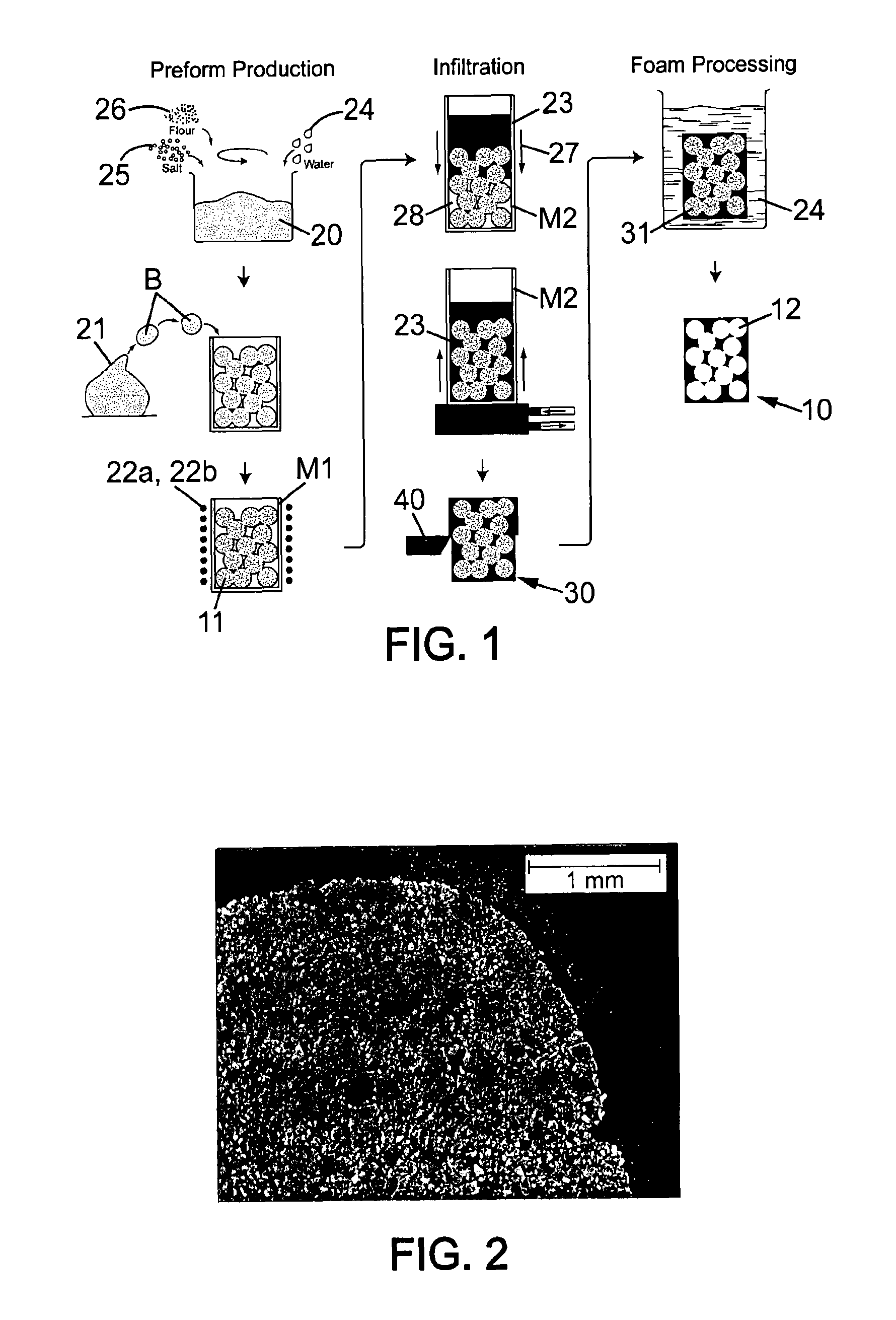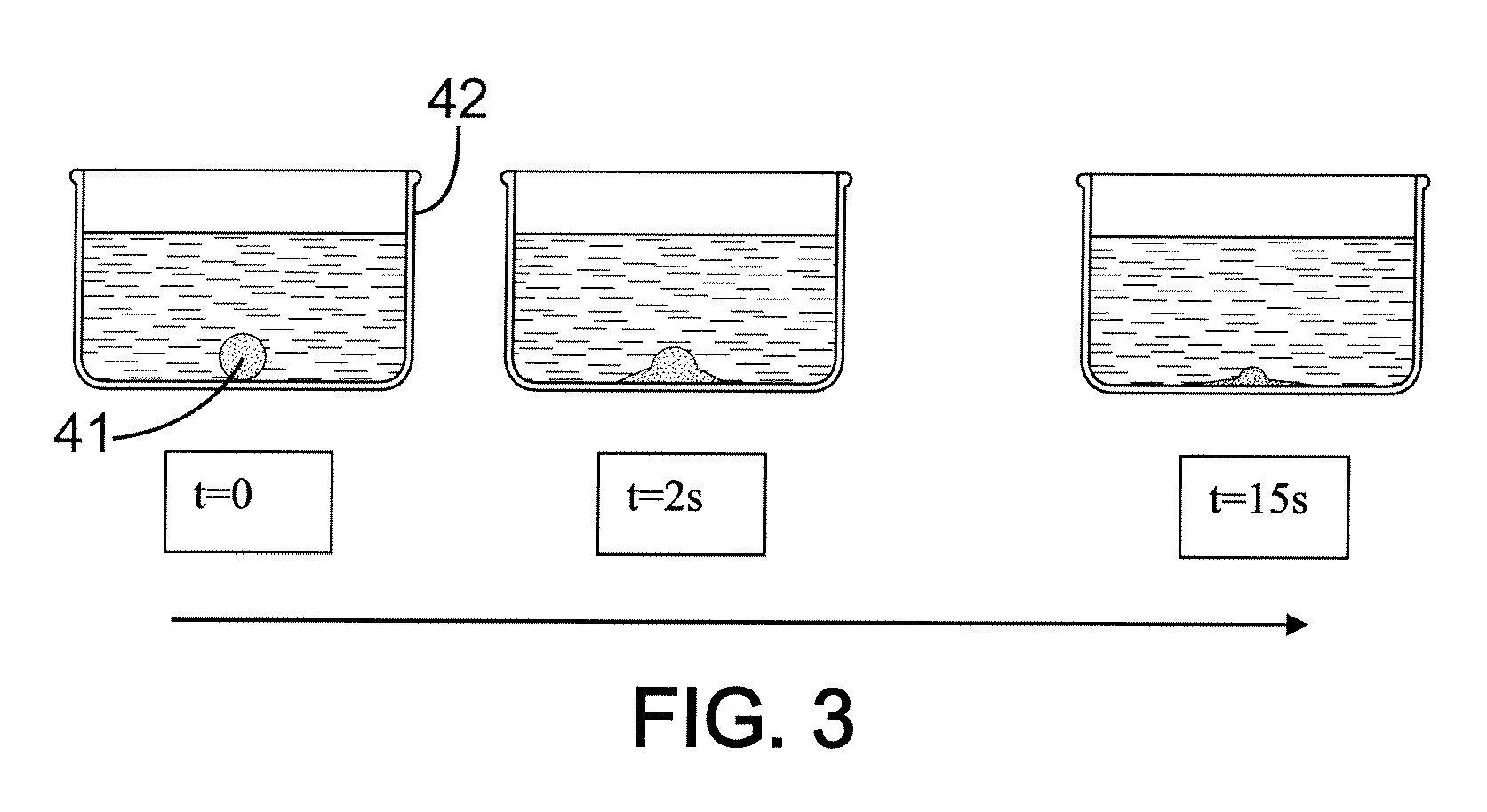Porous metal article and method of producing a porous metallic article
a technology of porous metal and metal articles, which is applied in the direction of manufacturing tools, foundry patterns, moulding apparatus, etc., can solve the problems of slow rate of preform removal by dissolution and limited methods, and achieve the effects of high porosity, easy shaping of preform materials, and increased preform removal ra
- Summary
- Abstract
- Description
- Claims
- Application Information
AI Technical Summary
Benefits of technology
Problems solved by technology
Method used
Image
Examples
example 1
[0049]15.2 g of ground wheat grain flour was mixed with 30 g (30 ml) of water to form a thin paste. To this paste 108.2 g of ground NaCl particles (all below 150 μm diameter) was gradually mixed in. This changed the mixture to a stiff paste 20 that could easily be moulded. The paste 20 was shaped (by hand) in a shaping step 21 into spheres or balls B of about 6 mm diameter, which were then rolled in a small amount of salt to dry them further and reduce shape change by creep of the paste before curing. The spheres were packed into a salt-coated mould M1 30 mm diameter and 70 mm height, and left for 2 hours to dry. The mould M1 was then heated to 200° C. for 2 hours, after which the spheres were observed to have turned brown or black; the temperature was then increased to 500° C. After 16 hours at this temperature the spheres were observed to have turned grey / white, and the preform 11 as a whole could be removed from the mould M1. The preform 11 was placed in another mould M2 with an ...
example 2
[0050]15.1 g of ground wheat grain flour was mixed with 30.3 g of water. To this mixture, 103.8 g of salt was added to form a smooth paste 20. The paste 20 was shaped into spheres or balls B of about 7 mm diameter, which were then rolled in a small amount of salt to dry them further and reduce shape change by creep of the paste 20 before drying. The spheres were packed into a salt-coated mould M1 30 mm diameter and 70 mm height, with a Al 6060 alloy tube of 8 mm diameter placed vertically running through the centre of the preform. The preform was dried at 70° C. for 3 hours, and was then heated to 200° C. for 16 hours, after which the spheres were observed to have turned black and the temperature was increased to 400° C. for a further 4 hours until the spheres were observed to have turned grey / white. The preform 11 was then removed from the mould M1. The space holding aluminium tube was removed and cleaned, and sealed at the ends before being replaced, and the preform 11 was placed ...
example 3
[0051]8.03 g of ground wheat grain flour was mixed with 20.47 g of water and to this mixture 88.76 g of ground NaCl was added to form a smooth paste 20. The paste 20 was formed into spheres or balls B of around 6 mm diameter, and these were placed in a mould M1. The preform was heated at 200° C. for 2 hours. The temperature was increased to 500° C. and the preform was left for a further 16 hours. The preform 11 was then placed in a crucible forming mould M2 underneath an ingot of 99.99% pure aluminium. This was heated under vacuum to 710° C. and, once the metal 23 was molten, 20 mbar argon was allowed into the furnace, causing infiltration of the preform 11 by the metal 23. After cooling excess dense metal was cut from the preform 11 leaving a cylinder of 36 mm diameter and 28 mm height. The sample piece 30 was then placed under a running tap. After 45 seconds it was examined and all the preform material was found to be removed. Measurement of the mass allowed the porosity to be cal...
PUM
| Property | Measurement | Unit |
|---|---|---|
| porosity | aaaaa | aaaaa |
| diameter | aaaaa | aaaaa |
| temperature | aaaaa | aaaaa |
Abstract
Description
Claims
Application Information
 Login to View More
Login to View More - R&D
- Intellectual Property
- Life Sciences
- Materials
- Tech Scout
- Unparalleled Data Quality
- Higher Quality Content
- 60% Fewer Hallucinations
Browse by: Latest US Patents, China's latest patents, Technical Efficacy Thesaurus, Application Domain, Technology Topic, Popular Technical Reports.
© 2025 PatSnap. All rights reserved.Legal|Privacy policy|Modern Slavery Act Transparency Statement|Sitemap|About US| Contact US: help@patsnap.com



